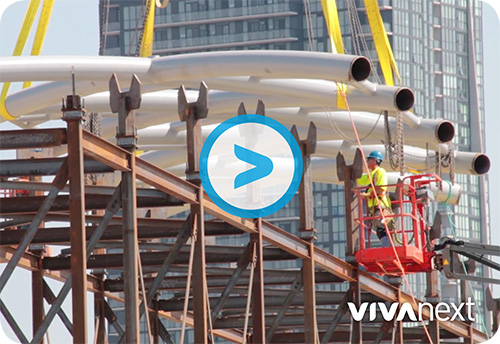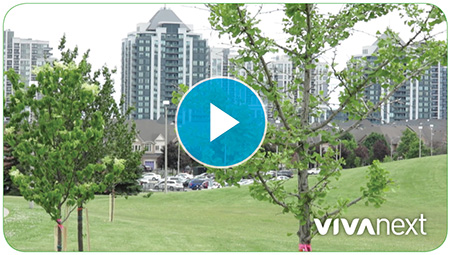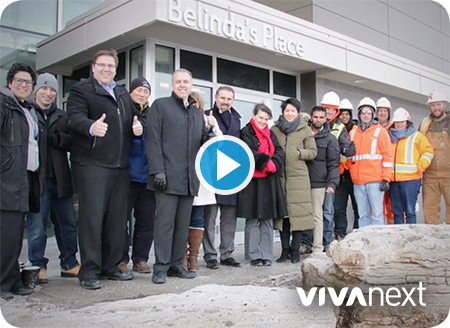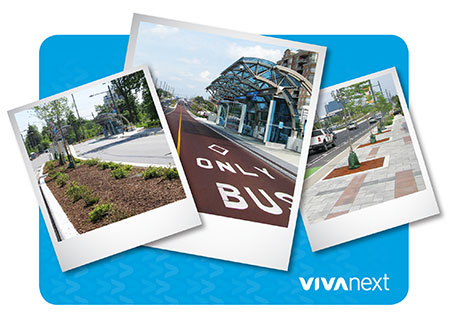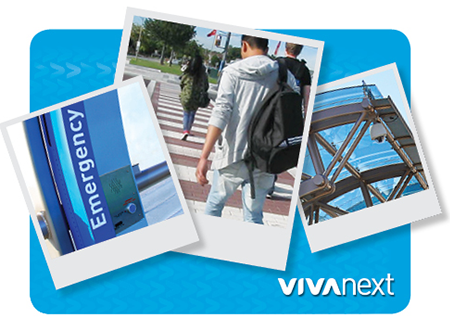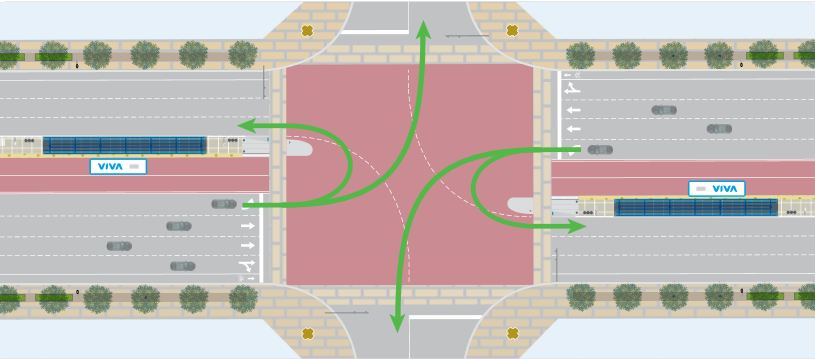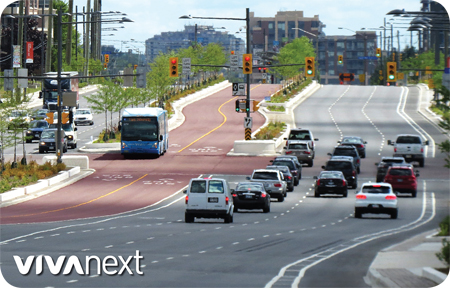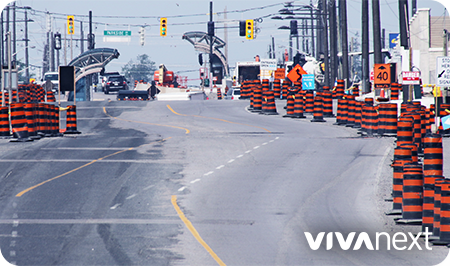
After a summer of paving on Highway 7 West, water main work on Bathurst, and a whole lot of finishing touches along the rapidway in Vaughan, there’s much more to come this fall.
Here’s what you can expect to see over the next couple of months:
the VMC area
If you’ve driven by the Vaughan Metropolitan Centre [VMC] area on Highway 7 West between Edgeley Blvd. and Jane Street, you’ll have seen the sudden rise of the huge steel canopy that will become the BRT station, VMC Spadina-Subway Station.
This unique vivastation will be extra-long and provide total coverage, also it will connect the rapidway with the Toronto-York Spadina Subway Extension and an inter-regional bus station, SmartREIT Terminal-VMC. This fall, workers are continuing to install and weld the giant structure.
the CN Bridge
Crews are busy working on sidewalks on both the north and south side of Highway 7 this fall. In addition, water seal testing is pretty much complete.
bike lanes, bike boxes and crosswalks street printing
Over the past month, crews have been installing the striped crosswalk street printing at intersections on Highway 7 West.
And in the next few weeks, they will be painting lines for bicycle lanes and laying the bright green street bond on bike lanes on either side of intersections and bike boxes at key corners, between Edgeley/Interchange and Bowes/Baldwin. Bike boxes allow cyclists to avoid crossing three lanes of busy traffic to reach the left-turn lanes, and act as a safe, designated waiting area.
Construction on Highway 7 between Jane and Bowes/Baldwin will wrap up by the end of the year.
Highway 7 West in Woodbridge
This area is mostly seeing pre-construction activities this fall to prepare for road widening in the spring. These will include culvert work, median removals, tree removals, and temporary traffic pole installation.
Bathurst and Centre
Water main work is continuing on Bathurst Street this fall and will start up on Centre Street as well. In addition, temporary traffic signals have gone up at intersections on Bathurst will be installed on Centre this fall. In addition, crews will also soon be busy with utility relocations.
It’s always exciting to see progress. Thank you everyone for your patience as the rapidway projects proceed!
Questions or comments? Comment below or email us at contactus@vivanext.com. To stay up-to-date on construction, sign up for email updates at vivanext.com/subscribe.

